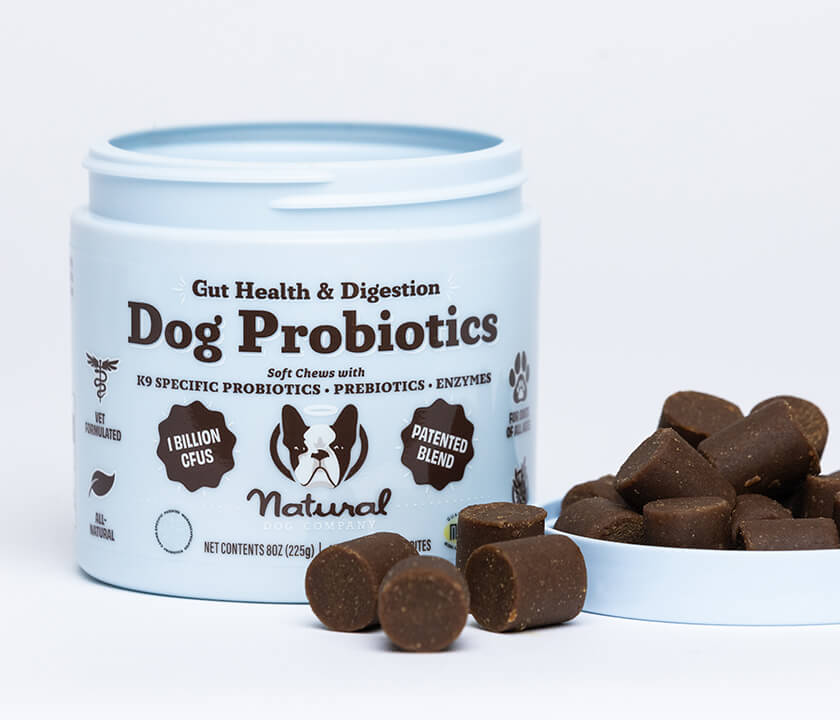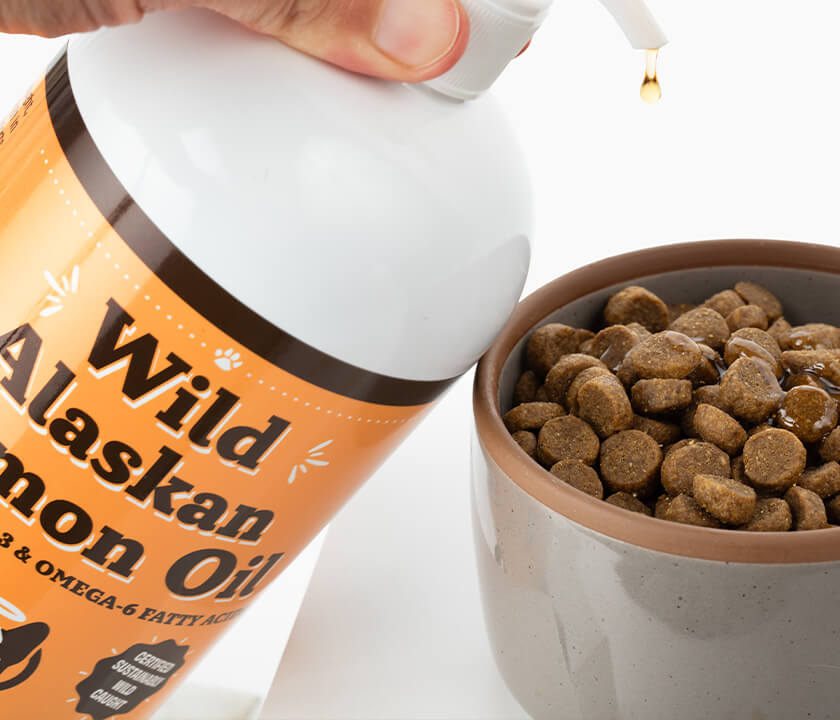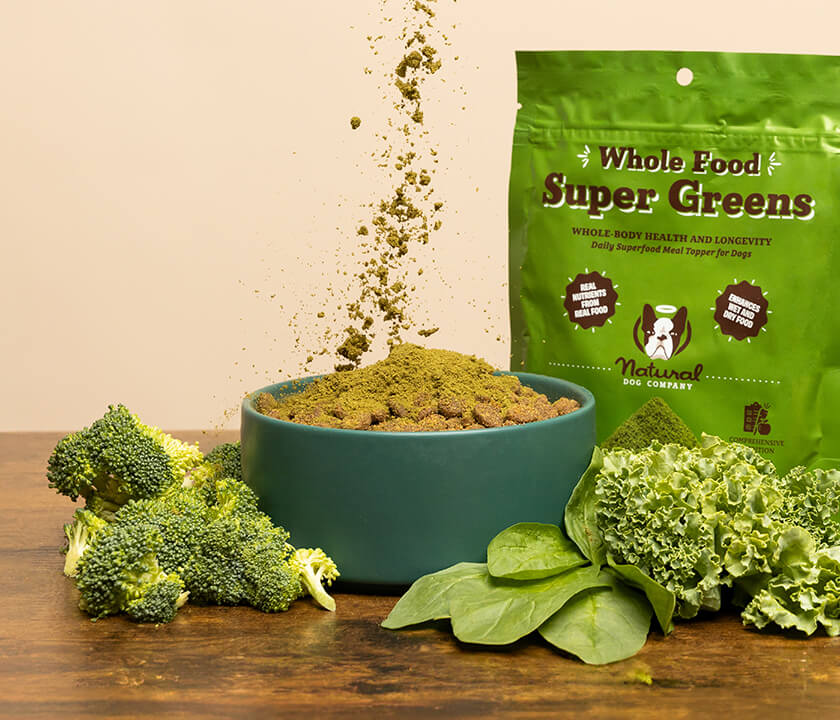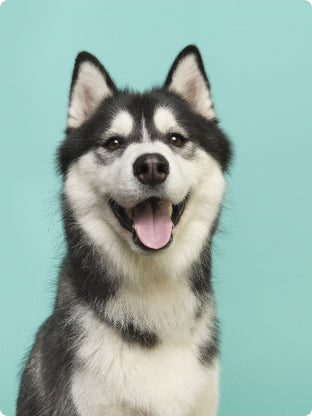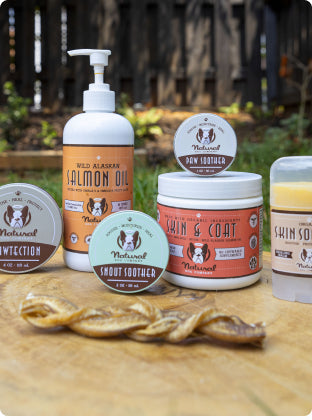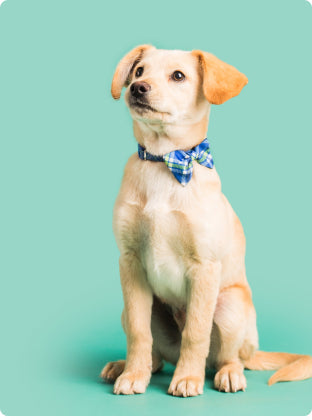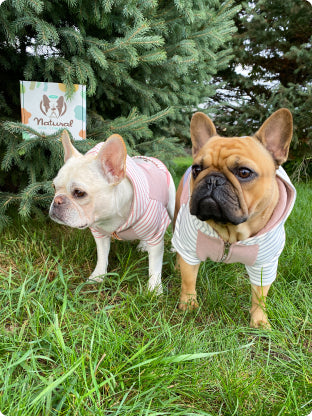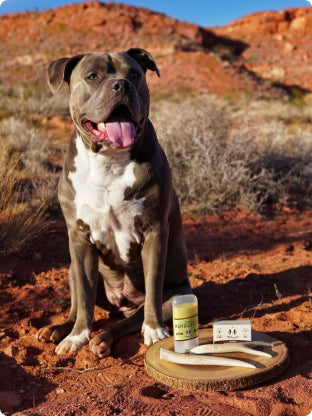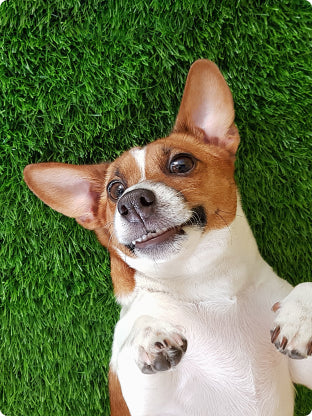“Are rough dog paws normal?”
Time to clear up this persistent myth which dog owners frequently face! It’s common for dog paw pads to become dry, rough, or even cracked for a variety of reasons. However, this is not the normal and healthy state of dog paw pads! A healthy paw pad should be smooth to the touch and free of all abrasions.
Rough paw pads can be very uncomfortable for your pup, sometimes even leading to compulsive licking—often making the problem worse. If you notice your dog has rough or dry paw pads, it’s time for some all-natural, moisturizing relief.
Why is paw pad care important?
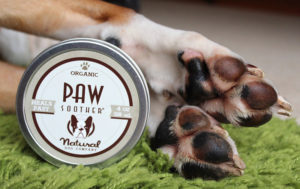
Smooth, supple paws are absolutely possible with Paw Soother!
Paw pad care is a vital but often overlooked part of dog ownership. Paw pads play an essential role in a dog’s everyday life, whether that involves lounging around the house or chasing cattle in the field. Paw pads provide traction, stability, and act as shock absorbers for the delicate bones in the paws.
Paw pads are tough enough to protect dogs from the elements, but they’re not invincible. Over time, dog paws build up a callous and become stronger—especially if the dog spends a lot of time on rough surfaces. But if paw pads become rough and dry, they won’t heal as quickly from normal wear and tear, and they can cause pain and irritation for your pup.
A dog’s paw pads are an important indicator of overall health.
Veterinarian Dr. Donna Raditic told PetMD that a dog’s paw pads can also be an important indication of your dog’s overall health:
“The cells in a dog’s paw pads have a high turnover rate. They require a lot of nutrition and a lot of blood supply. If something isn’t perfect in the body it can show up there first. But we tend not to think that way; it can take something drastic before we notice there’s something wrong with our dog’s health.” — Dr. Donna Raditic, DVM, DACVN, CVA
So keep an eye on your pup’s paws! If you regularly moisturize dry paws without seeing any improvement, it’s time to call your vet. Certain types of liver disease, dermatologic issues, and metabolic issues could be at play.
What Causes Rough Dog Paws?
Most of the time, dry dog pads can be traced back to four environmental causes: hot pavement, wintery conditions, exposure to chemicals, and allergies. If none of these are present, an underlying medical issue could be to blame.

Walking on hot, dry concrete can cause rough and cracked paw pads.
Hot weather (and pavement)
During the summertime, walking on hot asphalt and concrete can damage the skin on the bottom of your dog’s feet. To avoid blistered paws, walk your dog before the sun has a chance to heat the concrete, or after the sun has cooled down. If your dog loves running on the beach, be aware that sand and salt water are two other elements that can damage paw pads.
Cold weather (and dry air)
Heating our homes in the winter results in a warm and dry environment inside, which can cause your dog’s skin to dry out, most noticeably on their paws or nose. If your dog spends a lot of time soaking up the warmth of a fireplace or heater, their paws may become dry and cracked.
Exposure to Irritating chemicals
In winter, roads and sidewalks may be covered with de-icing salts and other ice melting chemicals. In summer, yards and gardens abound with fertilizers and pesticides. Even household cleaners can contain questionable ingredients. Not only are some of these chemicals toxic to your dog’s skin, they’re also ingested when your dog licks its paws.
Allergies
Just like humans, many dogs suffer from environmental and food allergies. These allergies can cause dry or itchy paws, leading to licking and chewing, which further damages paw skin.
Underlying medical issues
Severely dry, cracked paw pads can be a symptom of a condition called hyperkeratosis. Hyperkeratosis occurs when the skin produces too much keratin. This makes the skin on the paw pads, as well as other parts of the body, thick and callous-like. If your dog consistently has cracked and painful paws that seem to be growing “hairs” of extra skin, visit your vet to confirm hyperkeratosis.
Rough Paw Pad FAQs:
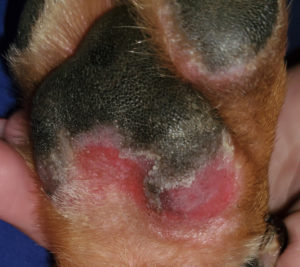
Red, peeling paw pads need immediate attention!
Is it normal for paw pads to peel?
Healthy paw pads are constantly shedding old skin and growing new, so some peeling is normal. However, large areas of peeled skin with raw, moist skin showing underneath can indicate a blister, burn, or abrasion wound, which are all very painful and prone to infection.
Keep a close eye on your dog’s feet—clean any wounds regularly with antibacterial soap or diluted betadine, dry well, then apply Paw Soother to accelerate healing.
Can I use Neosporin on my dog’s paws?
Neosporin is technically safe for pets, but we don’t recommend using it anywhere that your dog is likely to lick, including paws. Ingesting small amounts of Neosporin won’t do any permanent damage, but it can kill healthy gut bacteria resulting in vomiting or diarrhea.
Instead, use an all-natural moisturizer which is safe to ingest.
Will coconut oil help with rough paws?
Coconut oil has great benefits for both human and dog skin and can certainly help to moisturize rough paw pads. That is, if you can get your dog to leave it alone long enough to absorb! Coconut oil has a very low melting point and goes liquid very easily, so applying it to a warm paw is sure to make a big, ineffective mess. It also smells and tastes appealing, causing dogs to lick it off before it has a chance to start healing.
An organic paw balm is a better alternative, as well as distracting your dog with a long-lasting chew while it soaks into their skin.
Solve Rough Dog Paws with Paw Soother!
Our all-natural organic Paw Soother moisturizes, soothes, and heals your pup’s paws to keep them nourished and healthy. If you’re tired of rough dog paws snagging on your clothes and prickly paw-shakes, you need to try this balm! The results speak for themselves:

Zoe is a 10yo German Shorthaired Pointer that has free range of over 17 acres —and she takes full advantage of it! One day we noticed she was limping and took a look at her paws. We knew they were rough, but we had no idea how dry they had gotten! She had HUGE cracks going deep into her pads, which were clearly giving her pain, so we knew we had to do something for her. We saw so many incredible reviews about Paw Soother that it was a no-brainer. After only a few applications we were able to see a MAJOR improvement in her paws. Her cracks are almost gone and she is well on her way to being completely healed. You’ve got customers for life – thank you so much!! — Hunter and her German Shorthaired Pointer, Zoe

We started seeing ads for Natural Dog Company about a year ago, and in that time, I’ve been following their account on instagram and loving all of the positive reviews their products were getting! I decided this week to finally try out the Paw Soother Stick on my service dog who has pretty dry paw pads. Let me just say, this is hands down the BEST product on the market for moisturizing and healing those super dry, scratchy paws! Not only was it super easy to apply, but it shipped and arrived in less than ONE WEEK of ordering, and it smells super natural and chemical-free! I totally recommend Paw Soother to anyone looking for an all-natural, affordable way to help soften and heal their dog’s paw pads- you will not be disappointed! — Kayla and her Golden Retriever service dog, Honeybee
